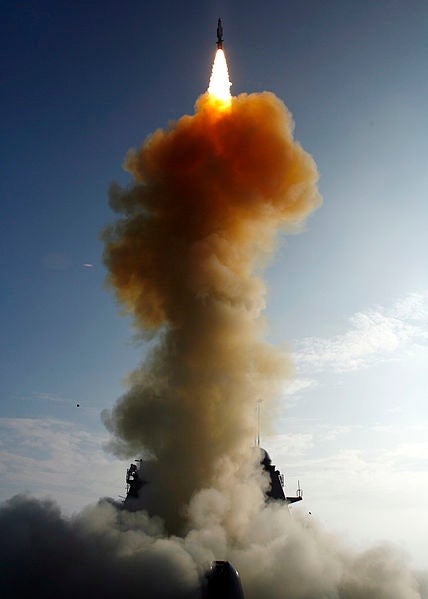
Raytheon has successfully demonstrated dual-band datalink’s integration and operational ability with Thales’ Advanced Phased Array Radar (APAR) at a shore-based Dutch facility, expanding participation of European naval ships in ballistic missile defence.
Conducted based on a joint US-Netherlands study in 2009, the trials were intended to prove Signaal Multibeam Acquisition Radar for Tracking-L and Advanced Phased Array Radar (SMART-L/APAR) sensor suites integration with the SM-3 missile to provide defence capabilities for non-Aegis ships.
During trials, the dual-band datalink used send and receive signals to communicate with the APAR X-band radar, which is part of a suite currently in-service with the Danish, Dutch and German navies.
Raytheon Missile Systems Air and Missile Defense Systems vice president Wes Kremer said that presently few of Europe’s naval ships can participate in the ‘upper tier’ ballistic missile defence of Nato countries because their radars cannot communicate with the SM-3.
"A common datalink that operates with both X and S-band radars is a very affordable, near-term solution that allows Europe to take advantage of proven technologies available today," Kremer said.
The dual-band datalink also helps reduce costs for the US navy customers, as it removes the need for holding two separate inventories of SMs for the Zumwalt (X-band) and Aegis (S-band) ship classes.
Designed to help the same missile communicate with interceptors in both S and X-band, the datalink integration into any of the SMs will also enable users to ‘drop in’ replacement for current hardware.
The Netherlands and Germany currently have seven SMART-L/APAR X-band radar equipped frigates, while Denmark is expected to deploy three additional ships that operate using the same communication frequency by 2013.
Aegis frigates, which use the S-band communication frequency, are operated by Norway, Spain and the US.
Image: An SM-3 missile after being launched to engage a satellite. Photo: unknown/US Navy.








